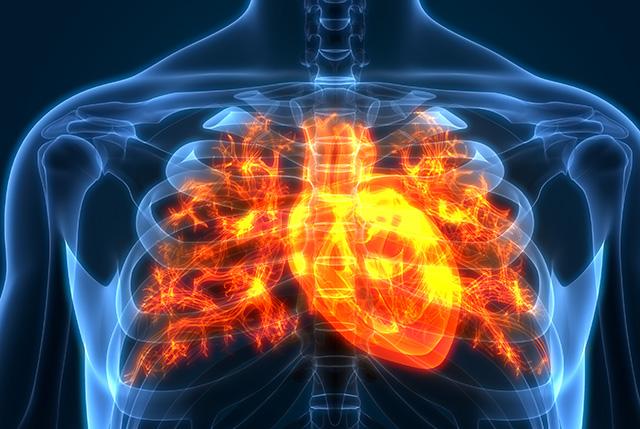
Study probes the powering of contractions in heart failure
Findings at nanometer and millisecond scales may help improve design of therapies directed at motor proteins to rescue failing hearts.
Current treatments can slow progression of heart failure, but do not address the underlying issues, including specific problems that cause systolic heart failure. In this condition, the heart doesn’t contract vigorously enough in pushing blood into the body’s circulation.
The heart muscle contractions that pump blood are generated by interactions between actin and myosin. These motor proteins power movement at the molecular level by converting the molecule ATP into energy
Earlier research in the lab of Michael Regnier, UW professor of bioengineering, had shown that dATP, a natural variant of ATP, can be used to promote stronger heart function. However, there remains a pressing need for data to explain why dATP helps to increase contractile force in heart disease.
Now, a recently published study headed by Regnier, who is a researcher at the UW Medicine Institute for Stem Cell and Regenerative Medicine and director of the Center for Translational Muscle Research, offers new insights, with unprecedented precision, about the nature of dATP. The results are detailed in a report in the May 20 online edition of the journal PNAS. The first author of the paper is bioengineering graduate student Joseph D. Powers.
The research team includes scientists from the University of Washington, the University of California San Diego, the Illinois Institute of Technology and the Argonne National Laboratory. The scientists hypothesized that dATP plays the role of matchmaker.
“Myosin and actin are attracted to each other by electrostatic charges,” explained Regnier, referring to the electrical force that brings two oppositely charged objects together. “Our hunch was that dATP enhances the initial attraction between these two critical muscle proteins and thereby leads to stronger contractions.”
By developing new experimental and computational approaches, the research team showed how small changes in protein structure translate to improved performance at multiple scales – the whole muscle, muscle cell, and the molecular levels. Their findings revealed a more holistic picture of the mechanisms behind dATP-augmented cardiac contractile force.
Regnier explained the main takeaways from the study: “A key finding was that small changes on the surface of myosin occur when dATP is used enhance its ability to bind with actin. This suggests the structure of myosin can be optimized and opens the door to possible new therapies to improve contraction of weakened heart muscle. This report offers a novel approach and a new standard for design and characterization of future cardiac therapeutics for systolic heart failure.”
This work was supported by National Institute of Health (R01 HL128368, R56 AG05559, U01 HL122199, T32-HL007312, K08 HL128826, T32EB1650, T32-HL105373, 9 P41 GM103622 and 8 P41 GM103426) and a Sackler Scholars Program Fellowship in Integrative Biophysics. This research used resources of the Advanced Photon Source, a U. S. Department of Energy Office of Science User Facility operated for the DOE Office of Science by the Argonne National Laboratory under contract DE-AC02-06CH11357.
Written by Thatcher Helding at the UW Medicine Institute for Stem Cell and Regenerative Medicine
For details about UW Medicine, please visit https://uwmedicine.org/about.